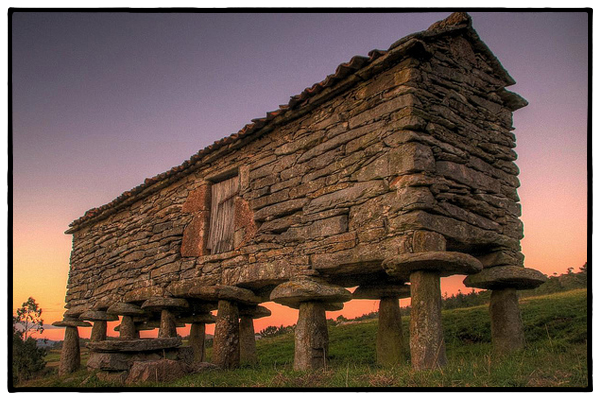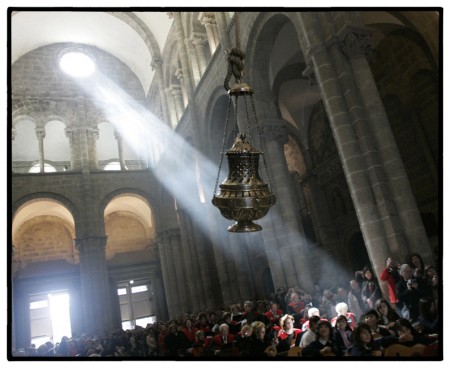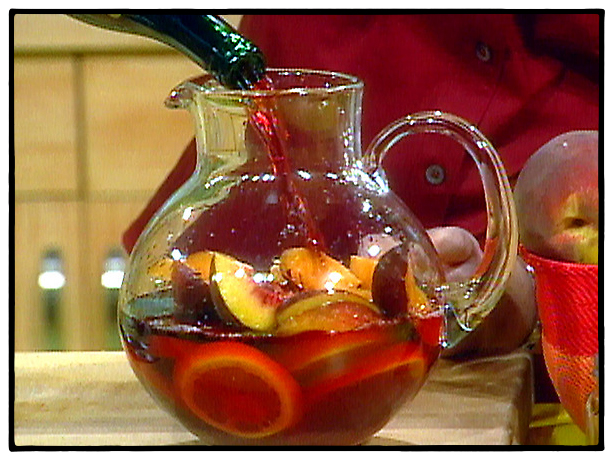We are driving through the Galician countryside to visit a winery in Rias Baixas, about an hour and a half outside of Santiago de Compostela. The terrain is green and rolling, the valleys cloaked in fog. Every once in awhile the road climbs, we get above the fog line, the sun is suddenly intense, and there sitting on the rocky hillside is a barn on stilts. A hórreo, the singular symbol of northern Spain. Some are made of wood; others of stone. They are square or rectangular or even round. Their roofs are thatched or tiled, pitched or double pitched. In other words, there is no singular architectural image of what constitutes an hórreo. Except that they are all built on stilts, usually stone pillars known as pegollos.
They say the hórreo was brought to Spain from the Roman Empire. Originally they were used as granaries, their elevation above the ground necessary in this the wettest part of Spain. Every once in awhile we come across a hórreo still being used to store corn or hay, but more often they hold firewood or chickens or even bikes and gardening equipment. Some have been turned into country houses; others look abandoned and sit listing on the side of a grassy hill, charming monuments to the days when the Roman Empire passed this way.










Recent Comments